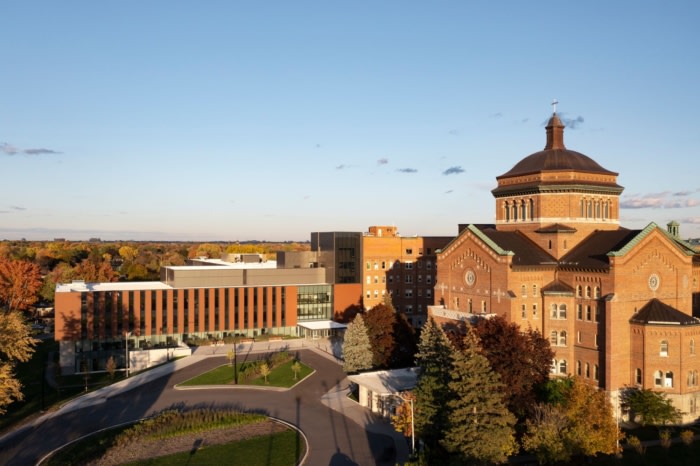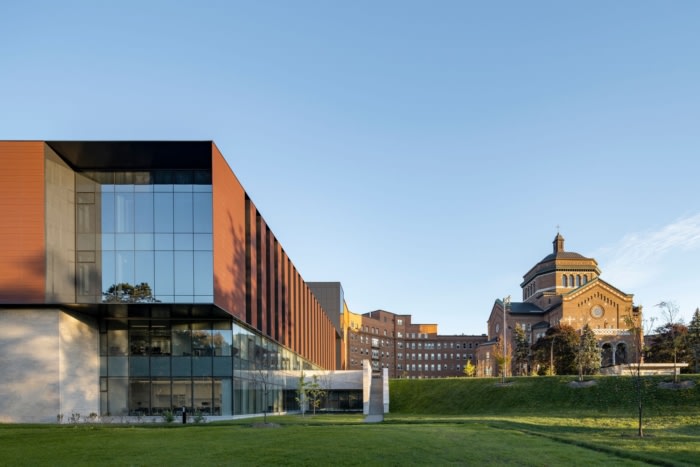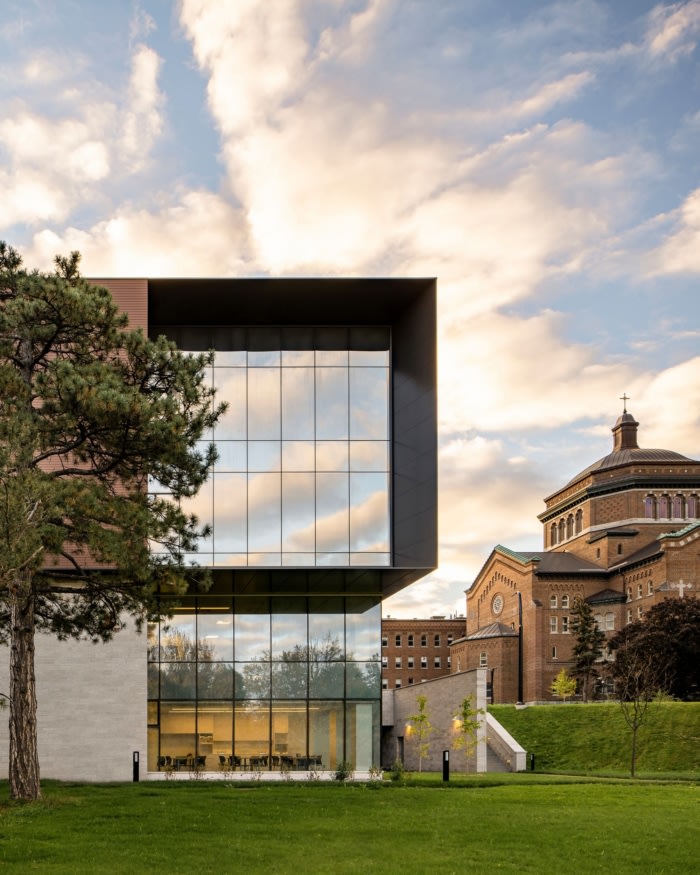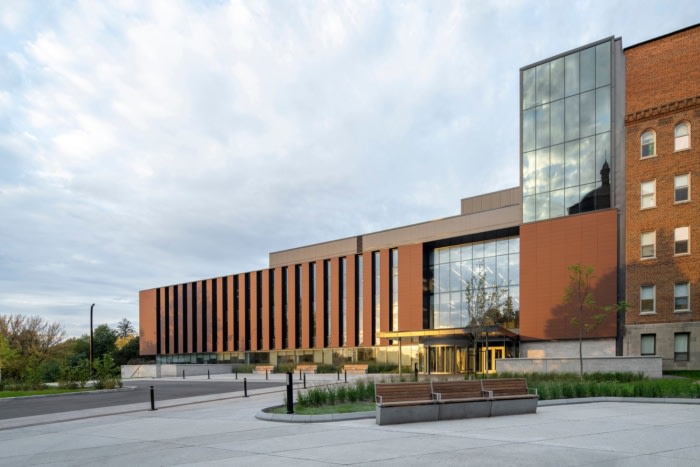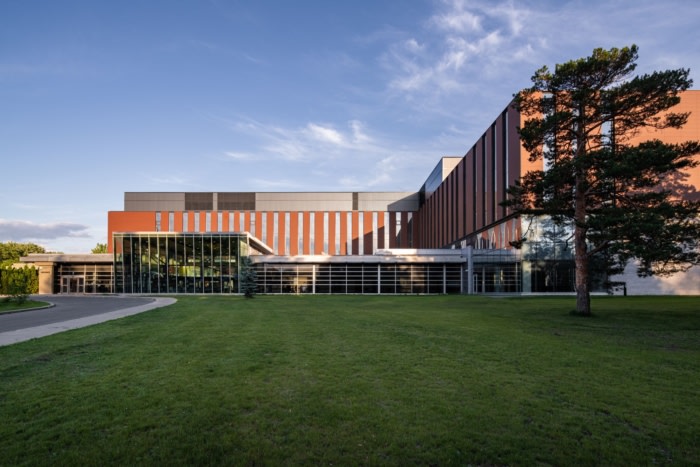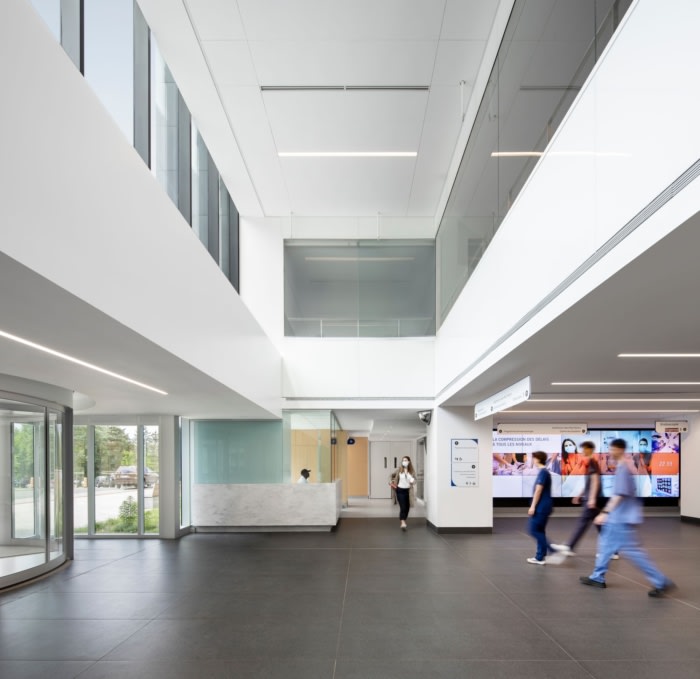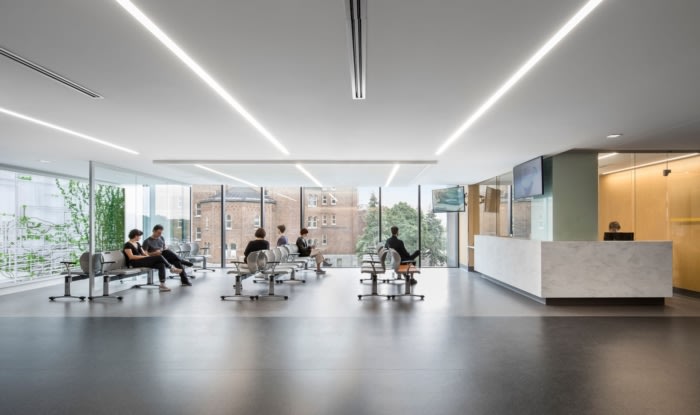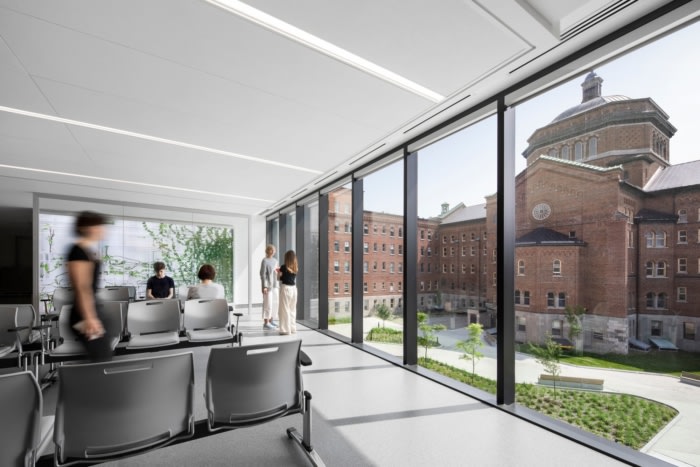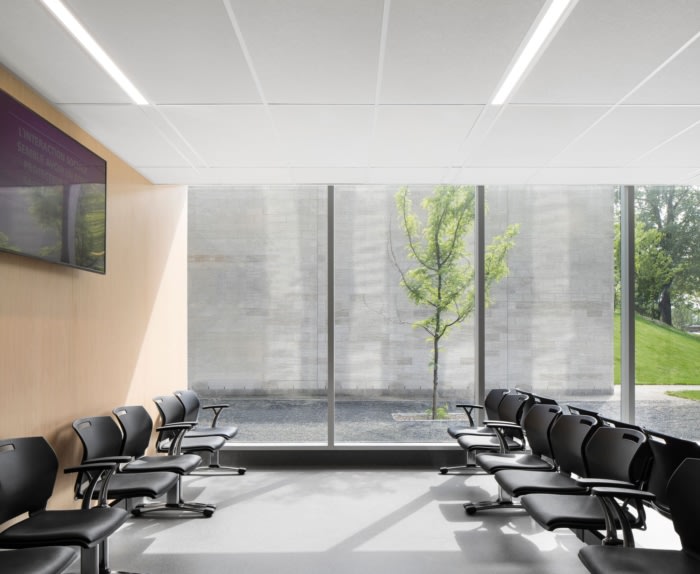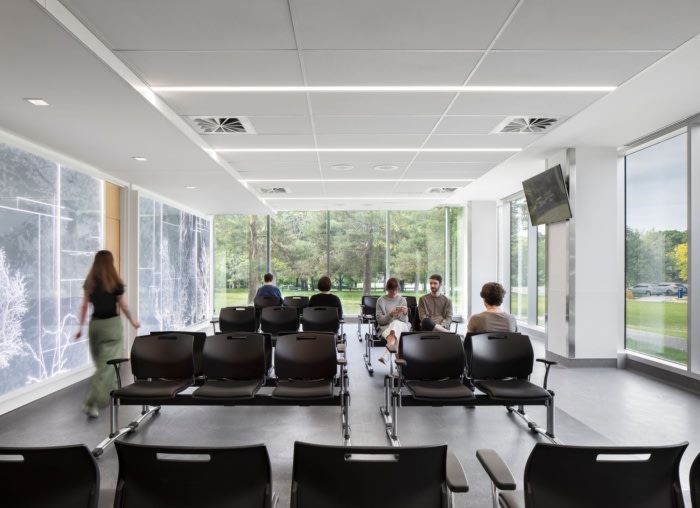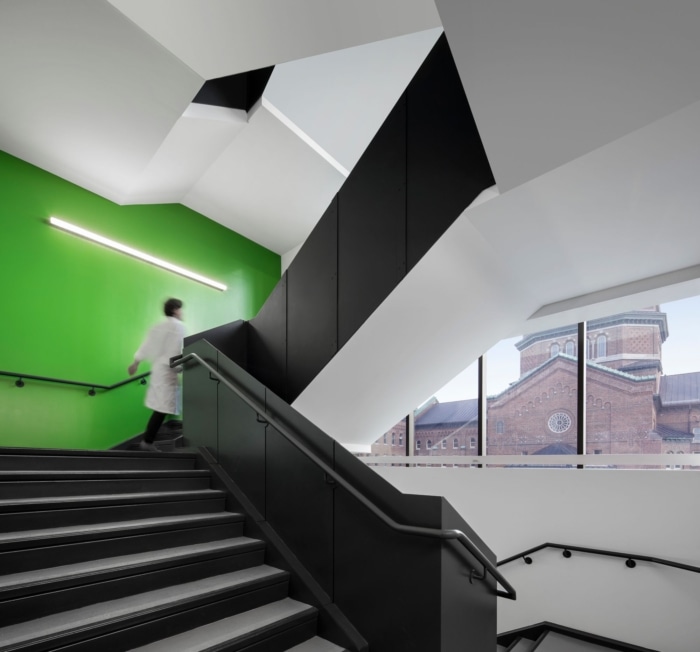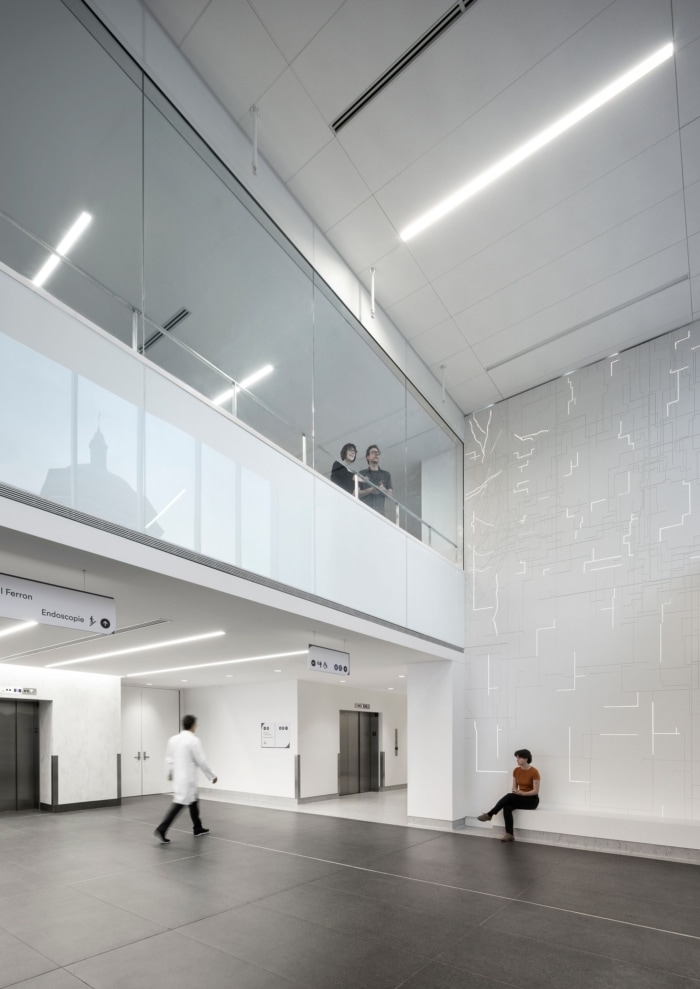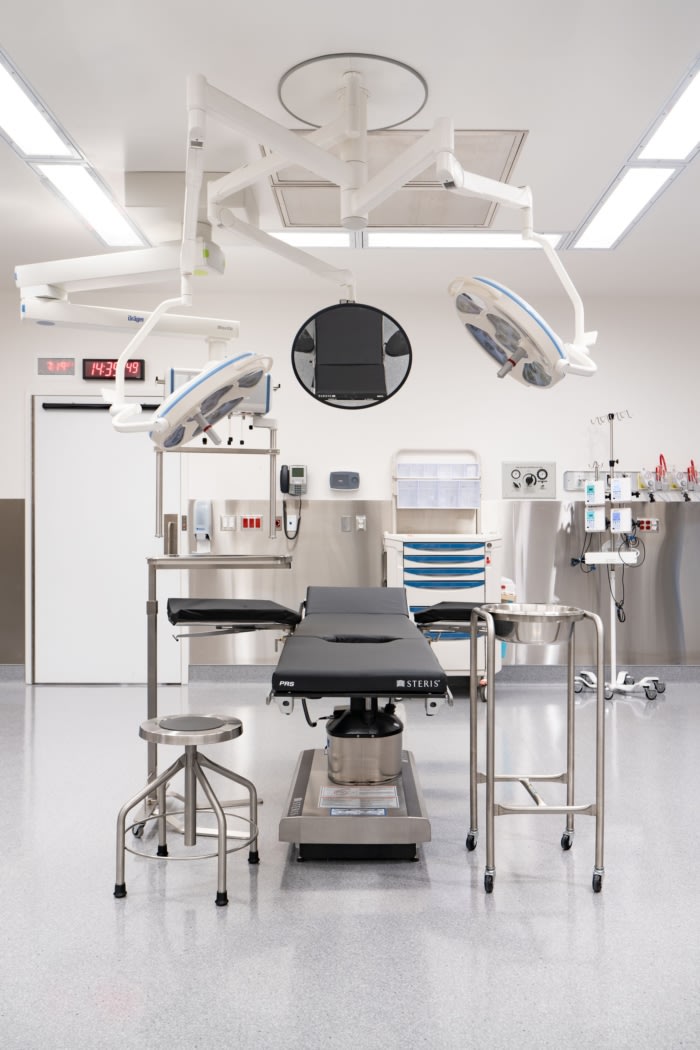Hôpital du Sacré-Cœur-de-Montréal Expansion
Provencher_Roy and Yelle Maillé architectes collaborated on the Hôpital du Sacré-Cœur-de-Montréal expansion in Montreal, Canada.
Located on Gouin Boulevard in the Ahuntsic-Cartierville borough, Hôpital du Sacré-Cœur-de-Montréal (HSCM) was first completed in 1927 and functioned as a sanitorium. Almost a century later, the hospital is now one of Montréal’s major ambulatory care centres, a highly specialized trauma centre, and a critical part of its healthcare infrastructure.
But, despite its prominence, its facilities suffered from decades of dilapidation. Over time, its physical and functional deficiencies impeded the hospital from delivering on its mission.
To solve this, the hospital commissioned architects’ Provencher_Roy and Yelle Maillé to design an expansion that would complement the heritage structure while creating cutting-edge spaces for healthcare. The design brings an L-shaped new wing that houses an integrated trauma centre, a mother-child unit, endoscopy and cardiology departments, and a medical device reprocessing unit. The addition is meticulously integrated with the existing facilities, expanding them while maintaining the sense of a single, unified hospital facility.
Patient treatment areas occupy the upper floors of the volume, clad with a curtain wall punctuated by vertical bands of a masonry block that relate to the historic hospital building and provide a sense of rhythm across the facade. These areas appear to float above the glass-enclosed lower levels, where waiting rooms, lounges, cafes, and other semi-public areas enjoy sweeping views over the grounds and the original building. The design maximizes natural light and views of nature at every turn, resulting in a calm, comfortable, and non-institutional patient experience.
The therapeutic value of sunlight
The addition leverages one of the site’s distinctive advantages—its bucolic setting and access to natural light. First built as a sanitorium, the hospital was originally sited and designed to take advantage of sunlight as a fundamental component of patient treatment. Today, contemporary medicine still recognizes the power of natural light and nature views as critical to the patient experience and morale.On the upper levels, the vertical alternation between masonry wall bands and curtain walls reinterprets the fenestration of the heritage structure in a contemporary architectural language. The approach integrates the new building with its built context, offers views out over the campus, maximizes natural light, and achieves optimal energy performance.
Living inspiration: a contemporary addition that honours the hospital’s heritage
The upper-level block of patient treatment areas adopts materiality that evokes the building’s original masonry. The interiors are characterized by warm, calming materials like wood while accommodating the hygiene and cleaning facilities a hospital setting demands.A long artery connects the historic buildings with the modern wing, ensuring the seamless circulation of patients and personnel. From this axis symbolizing interdisciplinarity, visitors can access the health care spaces of other pavilions via elevators visible from the entrance and signage facilitating orientation directly integrated into the architecture.
The artery opens onto a welcoming entryway bathed in light and designed to double as a casual meeting place for professionals from various departments, students, and patients. The area creates a dramatic sense of arrival and offers a much-needed place to relax and take breaks, improving the workplace experience of doctors, nurses, and other hospital staff.
Growth potential
The addition is designed to seamlessly accommodate future expansions as healthcare demands outstrip the facilities.
Design: Provencher_Roy and Yelle Maillé architectes
Photography: Stéphane Brügger, Olivier Blouin


